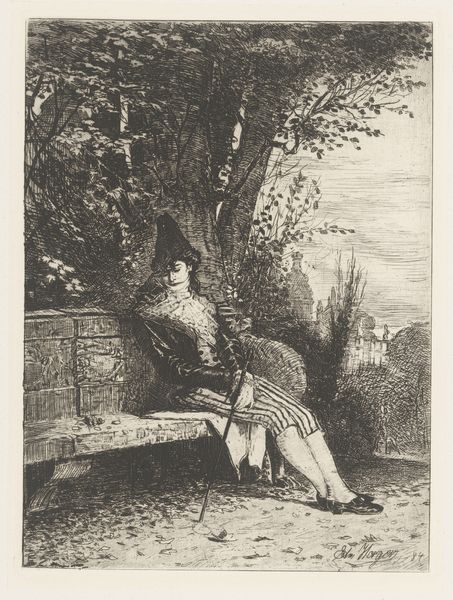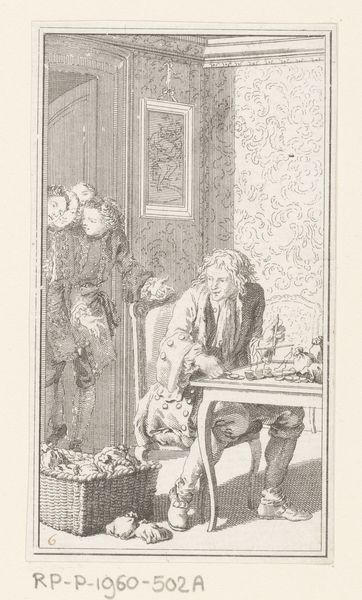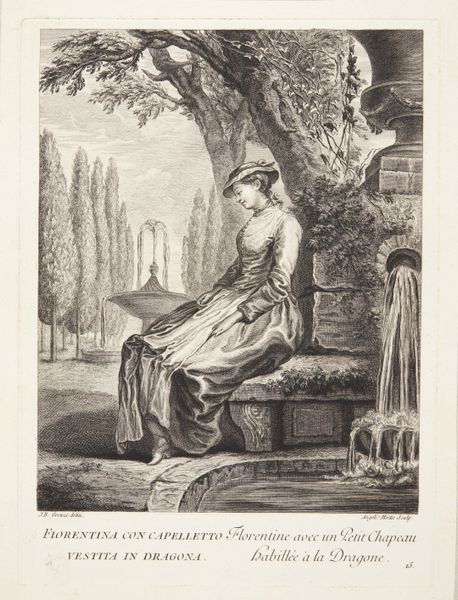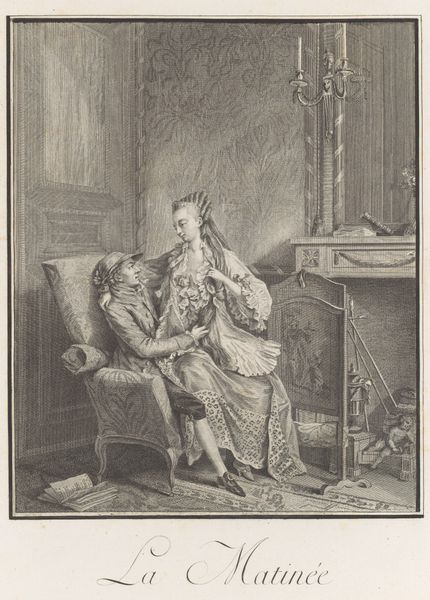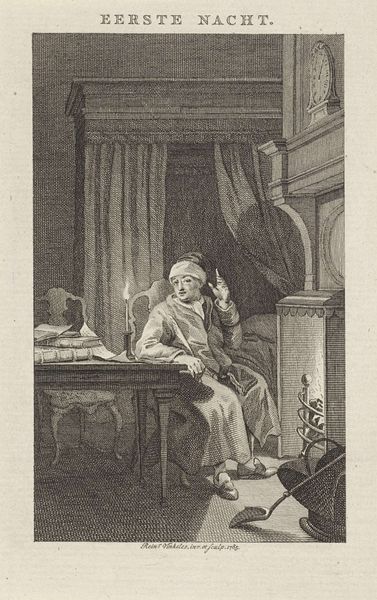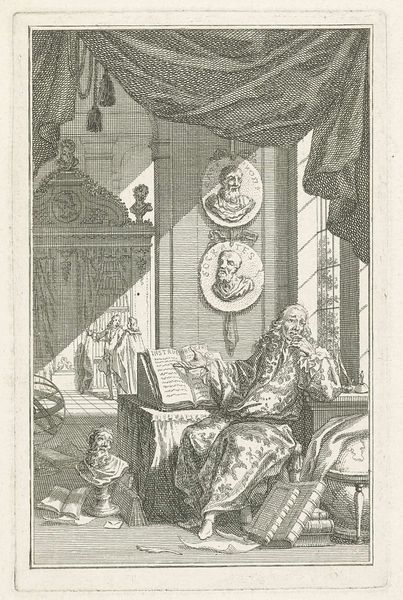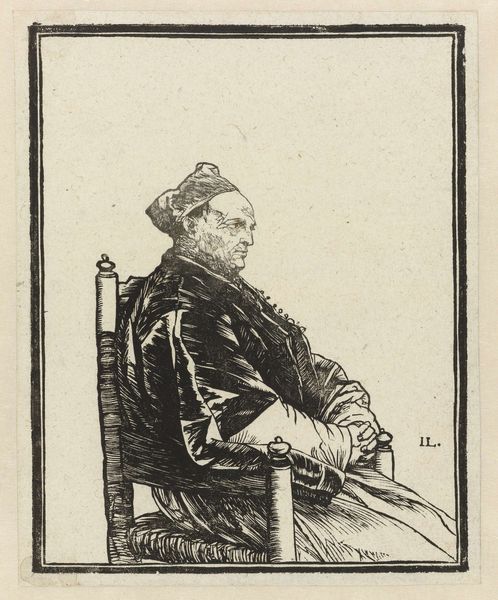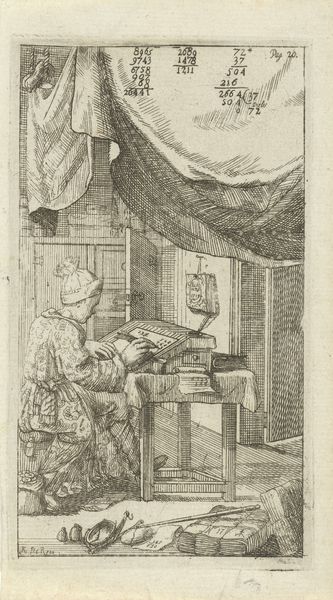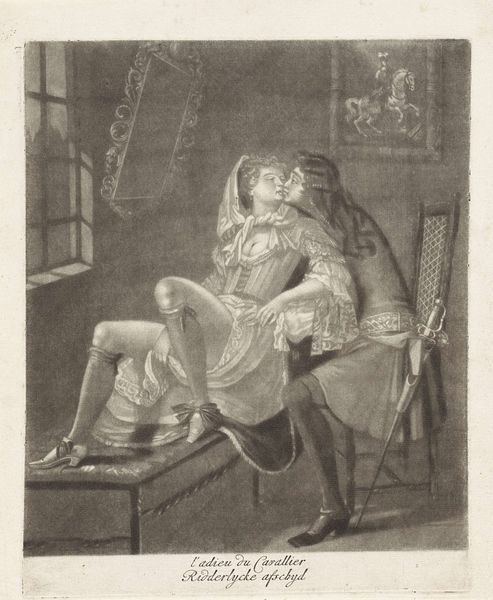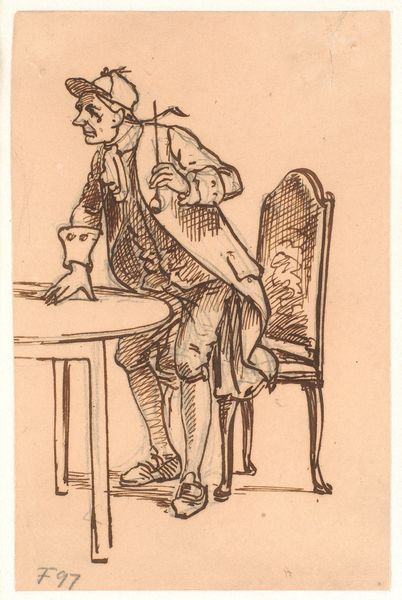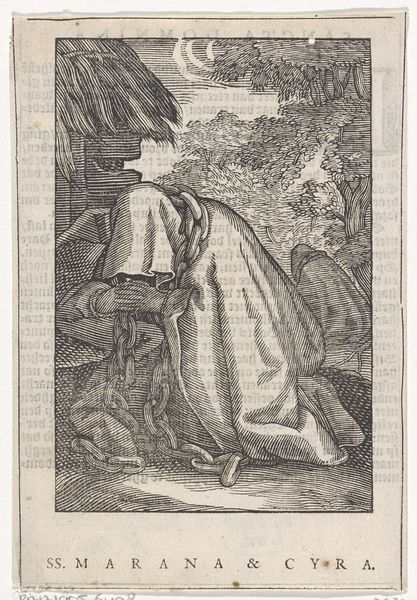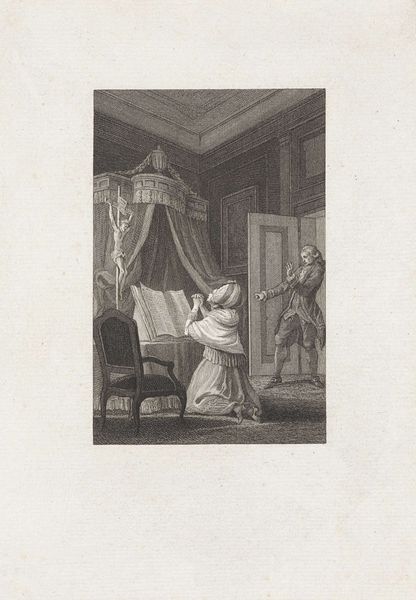
Dimensions: height 292 mm, width 206 mm
Copyright: Rijks Museum: Open Domain
This portrait of Willem IV, Prince of Orange-Nassau, was made anonymously, and the medium is unknown. This is how a Dutch aristocrat wanted to be seen. The image creates meaning through visual codes: the regalia of office, the elegant clothing, and the carefully cultivated landscape in the background all speak of power, wealth, and status. Considering the time and place in which it was made—the Netherlands—we might see this as commenting on the social structures of its own time. After a period of reduced power, Willem IV became the first hereditary Stadtholder, a position that consolidated power in the House of Orange. To fully understand this artwork, we must consider its institutional context. It's important to remember that history is not a fixed set of facts, but a series of interpretations. By looking at resources, such as letters, newspapers, and other documents from the period, we can develop a more nuanced understanding of the social and political context in which this portrait was created.
Comments
No comments
Be the first to comment and join the conversation on the ultimate creative platform.
